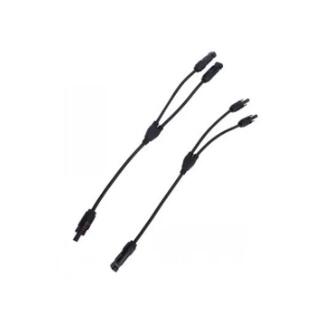How to Choose the Right Single-Core Solar Cable for Your Solar Installation
2024-08-14
Introduction
Selecting the right cables for your solar power system is crucial to ensure optimal performance, safety, and longevity. Among the various options available, single-core solar cables are widely used for their efficiency and reliability. However, with different specifications and features to consider, choosing the right single-core cable for your solar installation can be a bit daunting. In this blog, we'll guide you through the factors to consider when selecting the perfect single-core solar cable for your needs.
1. Conductor Material: Copper vs. Aluminum
The conductor material is one of the first things to consider when choosing a single-core solar cable:
- Copper: Copper is the most common material used in solar cables due to its high electrical conductivity. It ensures efficient power transmission with minimal loss, making it ideal for long cable runs. Copper cables are also more flexible and resistant to corrosion, though they tend to be more expensive.
- Aluminum: While not as conductive as copper, aluminum is a lighter and more cost-effective alternative. Aluminum cables are suitable for short cable runs or installations where weight is a concern. However, they may require larger cross-sections to achieve the same conductivity as copper cables.
2. Insulation and Sheathing
The insulation and sheathing of the cable protect the conductor from environmental factors and mechanical damage:
- Cross-Linked Polyethylene (XLPE): XLPE is a common insulation material for solar cables, known for its high temperature and chemical resistance. It ensures that the cable can withstand the harsh outdoor conditions typically found in solar installations.
- Ethylene Propylene Rubber (EPR): EPR is another insulation option, offering excellent flexibility and resistance to ozone, UV radiation, and extreme temperatures. It is often used in high-performance solar cables.
- Sheathing Material: The outer sheath should be resistant to UV radiation, moisture, and mechanical stress to protect the cable from environmental damage. Look for cables with a high IP rating (e.g., IP68) for maximum protection.
3. Cable Size and Current Carrying Capacity
The size of the cable, usually measured in square millimeters (mm²), determines its current-carrying capacity:
- Sizing: Choose a cable size that matches the current output of your solar panels. Undersized cables can lead to overheating and power loss, while oversized cables may be unnecessarily expensive.
- Voltage Rating: Ensure that the cable's voltage rating is compatible with your solar system. Most solar cables are rated for voltages up to 1,500V DC, suitable for both residential and commercial installations.
4. Flexibility and Installation
Flexibility is important for ease of installation, especially in complex or confined spaces:
- Cable Flexibility: Single-core cables should be flexible enough to route through tight spaces and around corners without compromising performance.
- Bending Radius: Check the cable's minimum bending radius to avoid damage during installation. A smaller bending radius indicates better flexibility.
5. Standards and Certifications
Ensure that the single-core solar cable meets relevant industry standards and certifications:
- TÜV Certification: TÜV certification indicates that the cable meets the stringent safety and performance standards required for solar installations.
- IEC Standards: Look for compliance with IEC standards, such as IEC 62930, which specifies the requirements for solar cables.
- RoHS Compliance: RoHS compliance ensures that the cable is free from hazardous substances, making it environmentally friendly and safe to use.
6. Durability and Longevity
Finally, consider the cable's durability and expected lifespan:
- UV and Weather Resistance: The cable should be resistant to UV radiation, extreme temperatures, and moisture to ensure long-term performance in outdoor installations.
- Expected Lifespan: High-quality solar cables typically have a lifespan of 25 years or more, ensuring that your solar power system remains efficient and reliable over time.
Conclusion
Choosing the right single-core solar cable for your installation involves careful consideration of the conductor material, insulation, size, and other key factors. By selecting a cable that meets your system's requirements and environmental conditions, you can ensure efficient power transmission, safety, and durability. Whether you're setting up a residential solar array or a large commercial installation, investing in high-quality single-core solar cables is essential for the long-term success of your solar energy project.



